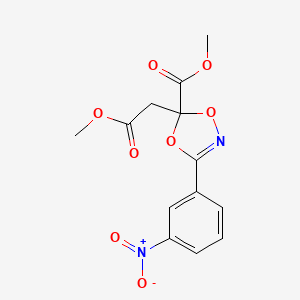|
Name: 1-(3-fluorophenyl)-2-(methylamino)propan-1-one) (Positional Isomer: 2-FMC) 3-Furanyl fentanyl (N-(1-phenethylpiperidin-4-yl)-N-phenylfuran-3-carboxamide)
Type: Opioid derivative
AKA: N/A

|
|
II. Natural Derivative
Synthetic substance, no natural derivative
 |
|
III. Chemical Profile (IUPAC name)

|
|
IV. History
1-(3-Fluorophenyl)-2-(methylamino)propan-1-one, also known as 2-FMC, and 3-furanyl fentanyl, a potent synthetic opioid, emerged in the early 2000s. They reflect trends in the development of new psychoactive substances and synthetic opioids. Their introduction has been linked to increased overdose cases and regulatory scrutiny due to their potency and health risks.

|
|
V. Legal Information
1-(3-Fluorophenyl)-2-(methylamino)propan-1-one, a stimulant similar to methcathinone, is regulated as an analog of controlled substances. In the U.S., 2-FMC is subject to control under the Federal Analog Act, making its manufacture, distribution, or possession illegal. Internationally, its legal status varies, with many countries adopting stringent regulations to prevent its abuse. Historical developments have led to tighter controls on synthetic stimulants. [Source: UNODC].
US Federal Schedule - I
Schedule I drugs, substances, or chemicals are defined as drugs with no currently accepted medical use and a high potential for abuse. Some examples of Schedule I drugs are: heroin, lysergic acid diethylamide (LSD), marijuana (cannabis), 3,4-methylenedioxymethamphetamine (ecstasy), methaqualone, and peyote.
Key US Federal Policies:
Controlled Substances Act. Public Law: Public Law 91-513 (text can be found on GovInfo) (https://www.dea.gov/drug-information/csa). Date enacted: October 27, 1970.
|
|
VI. Physical Effects
1-(3-Fluorophenyl)-2-(methylamino)propan-1-one (2-FMC) and 3-Furanyl Fentanyl are synthetic stimulants and opioids. 2-FMC acts as an upper, enhancing alertness and energy, while 3-Furanyl Fentanyl is a potent opioid causing significant sedation. Overdose risks include severe agitation and respiratory depression. Safe use involves cautious dosing. Recent research examines their effects and associated health risks.  |
|
VII. Psychological Effects
3-Furanyl fentanyl, an opioid, affects opioid receptors, causing euphoria and cognitive impairment. Immediate effects include mood enhancement and pain relief, while long-term use can lead to dependence and psychological issues such as depression. Effects last several hours, with significant mental health risks with chronic use.
 |
|
VIII. Culture
1-(3-Fluorophenyl)-2-(Methylamino)Propan-1-One (2-FMC) and 3-Furanyl Fentanyl are synthetic substances with no historical or cultural lore, emerging in the recent synthetic drug market. Their cultural significance lies in their use as legal highs and the associated health and legal challenges. Proponents of synthetic substances highlight their effects and legal status in certain regions, while opponents warn of health risks and unpredictable effects. Their use is primarily recreational, reflecting broader issues in synthetic drug regulation and public health.
 |
